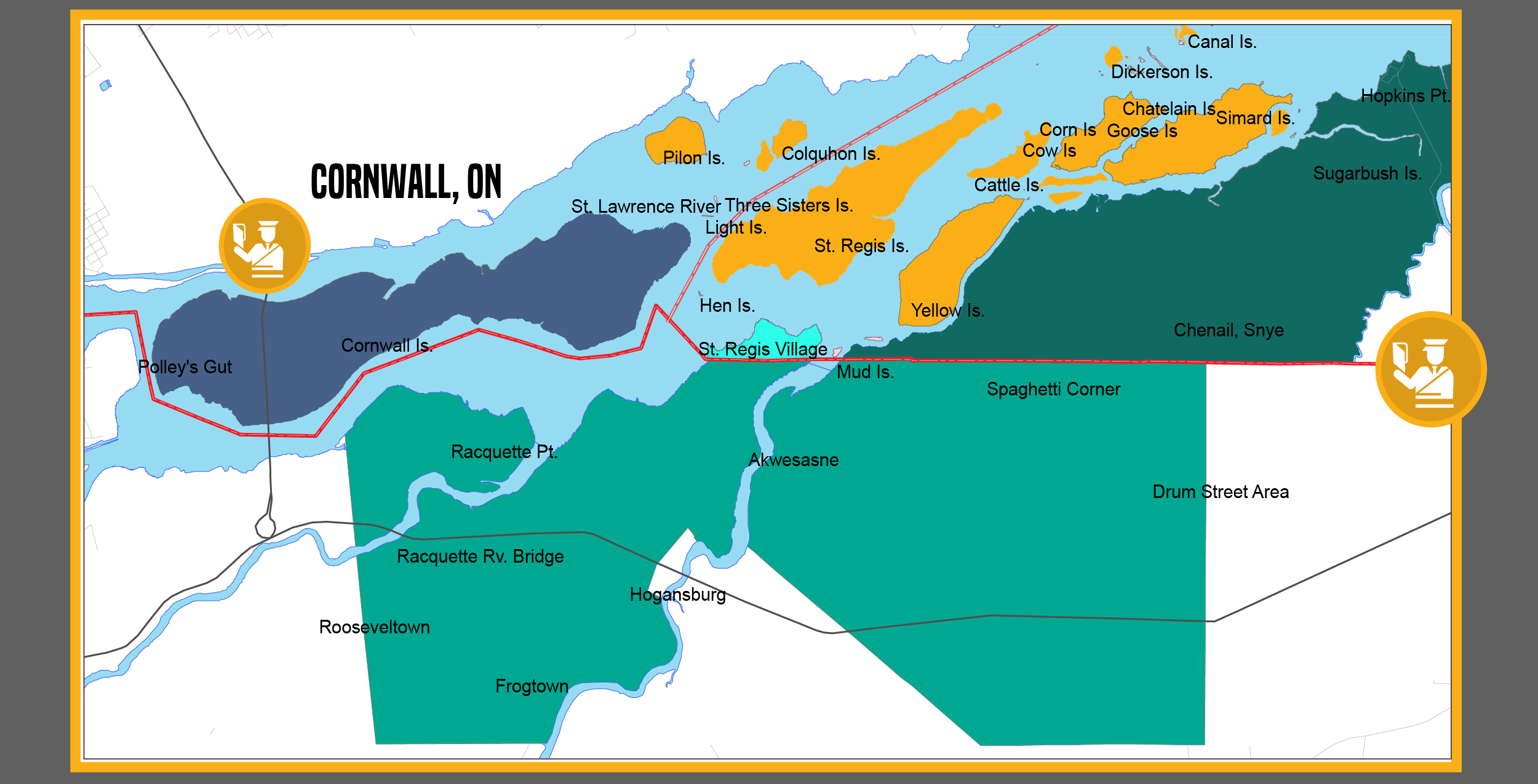Finding solutions to First Nations border crossing challenges: Senator Dyck and Senator Patterson

Tags
For many members of cross-border First Nations communities, travel into Canada or the United States is a daily occurrence.
Their family may live on one side of the border, their jobs may be on the other.
But parts of the Canadian side of the Akwesasne reserve, for instance, can only be accessed through the U.S. and people travelling from the U.S. and into the Ontario part of the reserve must detour through Cornwall to check in with border agents.
So for many members of First Nations communities who just want to work or shop or spend time with family, their hours are wasted in the dull routine of dreary border outposts.
The Senate Committee on Aboriginal Peoples has sought a solution to this long-standing irritant, and on Tuesday, June 21, 2016 we issued a report called Border Crossing Issues and the Jay Treaty after listening to evidence from people caught up in the bureaucracy of border crossing.
Our committee is calling for federal government to appoint a special representative to ease the way towards improved cross-border mobility.
Grand Chief Abram Benedict told our committee that the federal government has failed to act; the committee heard there is a perceived unwillingness of the government to work with the Mohawk of Akwesasne to develop a secure ID card that could solve this problem.
“Canada has not been responsive to our attempts to find solutions,” Grand Chief Benedict said. “Instead, they seem to find reasons for them not to work.”
There is a historical precedent that recognized the rights of First Nations people to freely cross the border.
The Jay Treaty, signed in 1794 by representatives of the U.S. and British governments, guaranteed cross-border mobility. But it has never been recognized in Canada and it has no practical application today.
Nevertheless, it demonstrates a historical foundation for improved cross-border mobility.
The government well knows there are a number of measures in place to expedite border crossing for frequent, low-risk travellers that do no compromise border security.
We believe that a solution can be implemented that balances security with a fundamental respect for the realities of life on cross-border reserves.
First Nations people across this country face challenges that other Canadians do not. Border crossing needs not be one of them.
*Please note that as of July 31, 2022, the name of the Senate Committee on Aboriginal Peoples was changed to the Senate Committee on Indigenous Peoples. More information about this change can be found here.
Note to readers: The Honourable Dennis Glen Patterson retired from the Senate of Canada in December 2023. Learn more about his work in Parliament.
For many members of cross-border First Nations communities, travel into Canada or the United States is a daily occurrence.
Their family may live on one side of the border, their jobs may be on the other.
But parts of the Canadian side of the Akwesasne reserve, for instance, can only be accessed through the U.S. and people travelling from the U.S. and into the Ontario part of the reserve must detour through Cornwall to check in with border agents.
So for many members of First Nations communities who just want to work or shop or spend time with family, their hours are wasted in the dull routine of dreary border outposts.
The Senate Committee on Aboriginal Peoples has sought a solution to this long-standing irritant, and on Tuesday, June 21, 2016 we issued a report called Border Crossing Issues and the Jay Treaty after listening to evidence from people caught up in the bureaucracy of border crossing.
Our committee is calling for federal government to appoint a special representative to ease the way towards improved cross-border mobility.
Grand Chief Abram Benedict told our committee that the federal government has failed to act; the committee heard there is a perceived unwillingness of the government to work with the Mohawk of Akwesasne to develop a secure ID card that could solve this problem.
“Canada has not been responsive to our attempts to find solutions,” Grand Chief Benedict said. “Instead, they seem to find reasons for them not to work.”
There is a historical precedent that recognized the rights of First Nations people to freely cross the border.
The Jay Treaty, signed in 1794 by representatives of the U.S. and British governments, guaranteed cross-border mobility. But it has never been recognized in Canada and it has no practical application today.
Nevertheless, it demonstrates a historical foundation for improved cross-border mobility.
The government well knows there are a number of measures in place to expedite border crossing for frequent, low-risk travellers that do no compromise border security.
We believe that a solution can be implemented that balances security with a fundamental respect for the realities of life on cross-border reserves.
First Nations people across this country face challenges that other Canadians do not. Border crossing needs not be one of them.
*Please note that as of July 31, 2022, the name of the Senate Committee on Aboriginal Peoples was changed to the Senate Committee on Indigenous Peoples. More information about this change can be found here.
Note to readers: The Honourable Dennis Glen Patterson retired from the Senate of Canada in December 2023. Learn more about his work in Parliament.


